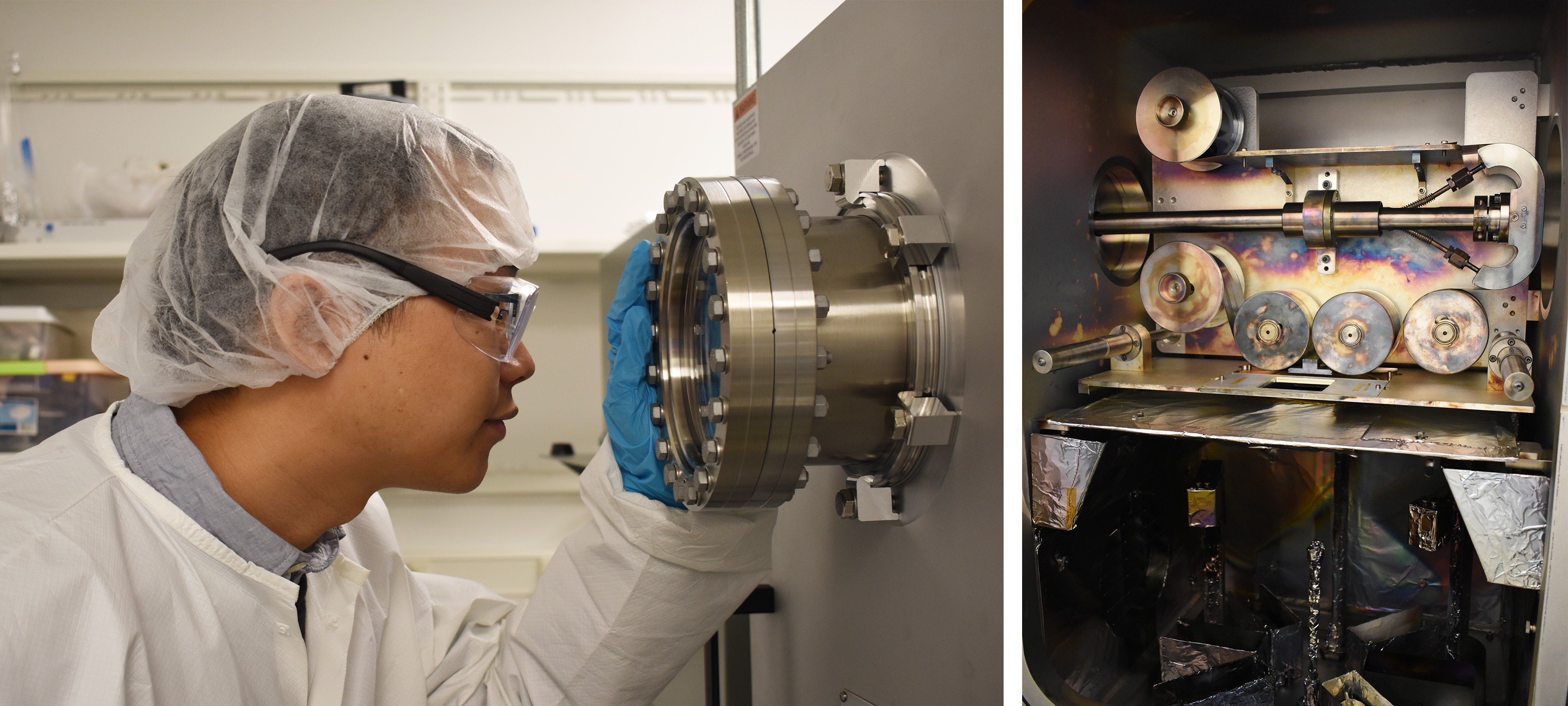A new $1.6M energy project to develop low cost manufacturing of white organic lighting
Prof. Stephen Forrest is developing an automated high-yield roll-to-roll process to manufacture organic LEDs for lighting.

 Enlarge
Enlarge
A new $1.6M research project funded by the Department of Energy is bringing the promise of energy efficient and flexible lighting options to the nation’s buildings, and your living room. Capitalizing on past research in organic light-emitting-diodes (OLEDs) and advanced manufacturing techniques for organic solar cells, the researchers are developing a high yield, automated process to manufacture white organic solid-state lighting devices that will come off the presses like sheets of newspaper.
We aim to print lights roll-to-roll, like you would print newspaper.
Prof. Stephen Forrest
With about 25% of all electricity in the U.S. going to lighting, taking advantage of highly-efficient OLED technology in the world of lighting could result in huge energy savings. Most of the technical barriers in using OLEDs for general lighting have been overcome, but the cost of manufacturing these devices is still relatively high due in part to the high cost of materials. One way to lower overall manufacturing cost is through speed and efficiency.
“Our approach is to take advantage of the unique aspects of organic electronics, which is flexibility and conformability,” said Stephen Forrest, who is the Peter A. Franken Distinguished University Professor, Paul G. Goebel Professor of Engineering, and professor of electrical engineering and computer science, physics, and materials science & engineering.
Working with Prof. Max Shtein in the department of materials science & engineering, Forrest says, “We aim to print lights roll-to-roll, like you would print newspaper. Newspaper inks are actually organic semiconductors, which are some of the same ingredients that we use to make organic electronic devices. This manufacturing route to ultralow cost lighting has long been a dream but has yet to be realized in any significant manner.”
Forrest brings his expertise in roll-to-roll (R2R) manufacturing of organic solar cells to this emerging industry. Making the switch from solar cells to lighting required redesigning a key piece of equipment in his lab, a year-long process accomplished with the help of Angstrom Engineering.
“It’s a really cool system,” said Forrest, adding that “it’s designed for research, not for spitting out product at commercial scale.”
A unique aspect of this specially-designed piece of equipment is the presence of two chambers with differing pressure. This gives the researchers greater control over the nanomorphology of the devices, allowing them to create a wider array of devices.
The first chamber uses a process called organic vapor phased deposition (OVPD). Invented by Forrest, OVPD is a process where materials are heated until they become a gas, and are then deposited onto a cold substrate. It allows for a scalable continuous process, ideal for organic devices.
The second chamber uses vacuum thermal evaporation (VTE), which allows for a higher degree of purity, pattern, and structural control over high performance devices. A third encapsulation chamber used to package the devices completes the process in a single, integrated system.
Some of the technical difficulties to be overcome are the need for flexible packaging to protect the devices from the atmosphere, which degrades the materials, and the ability to deposit the chemicals accurately and at high speed.
The industry will not settle for anything but the very best performance possible.
Prof. Stephen Forrest
“A lot of things happen at a fundamental level when you try to deposit a semiconductor at super high speed,” explains Forrest. “You have porosity issues, you have defects, you have dust, you have all kinds of things that affect the performance of the devices. The industry will not settle for anything but the very best performance possible.”
White OLED (WOLED) lighting, created by combining red, green and blue light, can be created in several different ways. One technique Forrest is considering is depositing the three colors in extremely thin stripes, making it easier to manipulate the light.
“Taking advantage of what we know about how light affects mood and energy, you may want more red in the evening when you are trying to rest, and more blue during the day to keep you alert. We can easily do this with our technology,” said Forrest who added that architects often work with lighting engineers when designing buildings to come up with an appropriate color of white.
Universal Display Corporation will be assessing the market potential of the new manufacturing process.
Press release announcing the grant, “From Deposition to Encapsulation: Roll-to-Roll Manufacturing of Organic Light Emitting Devices for Lighting,” by the Department of Energy, Office of Energy Efficiency & Renewable Energy

 MENU
MENU 
